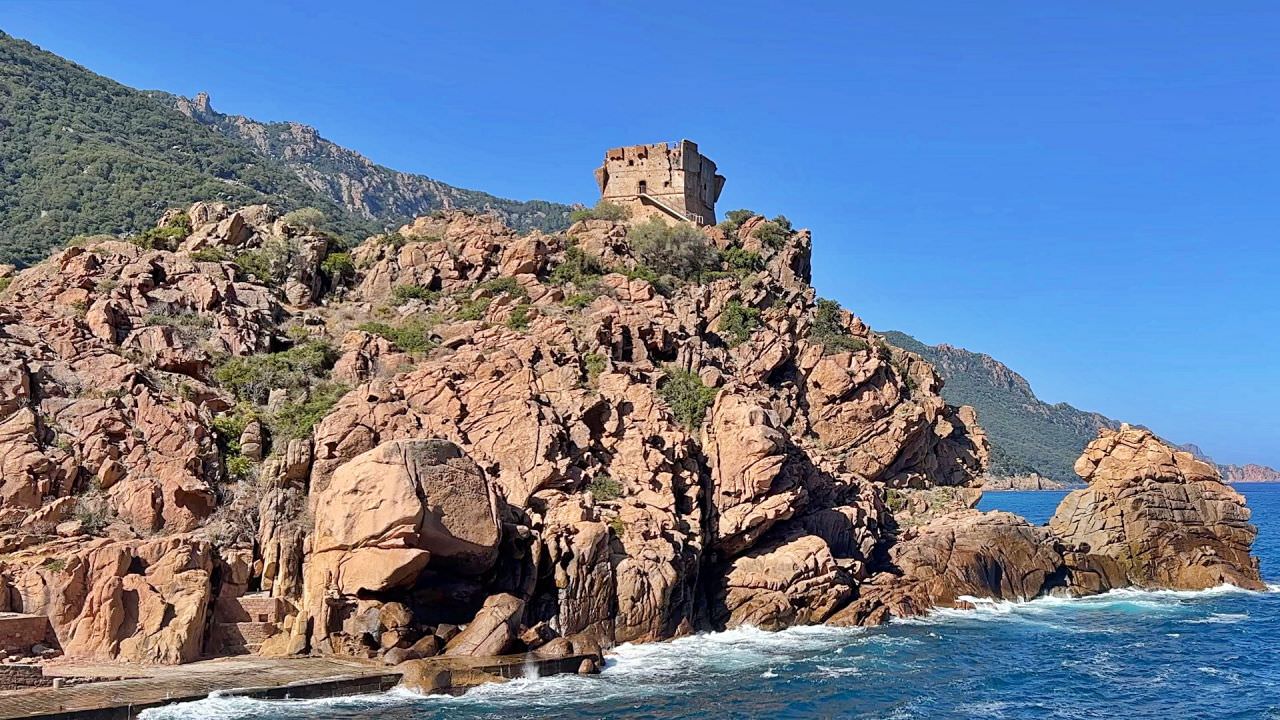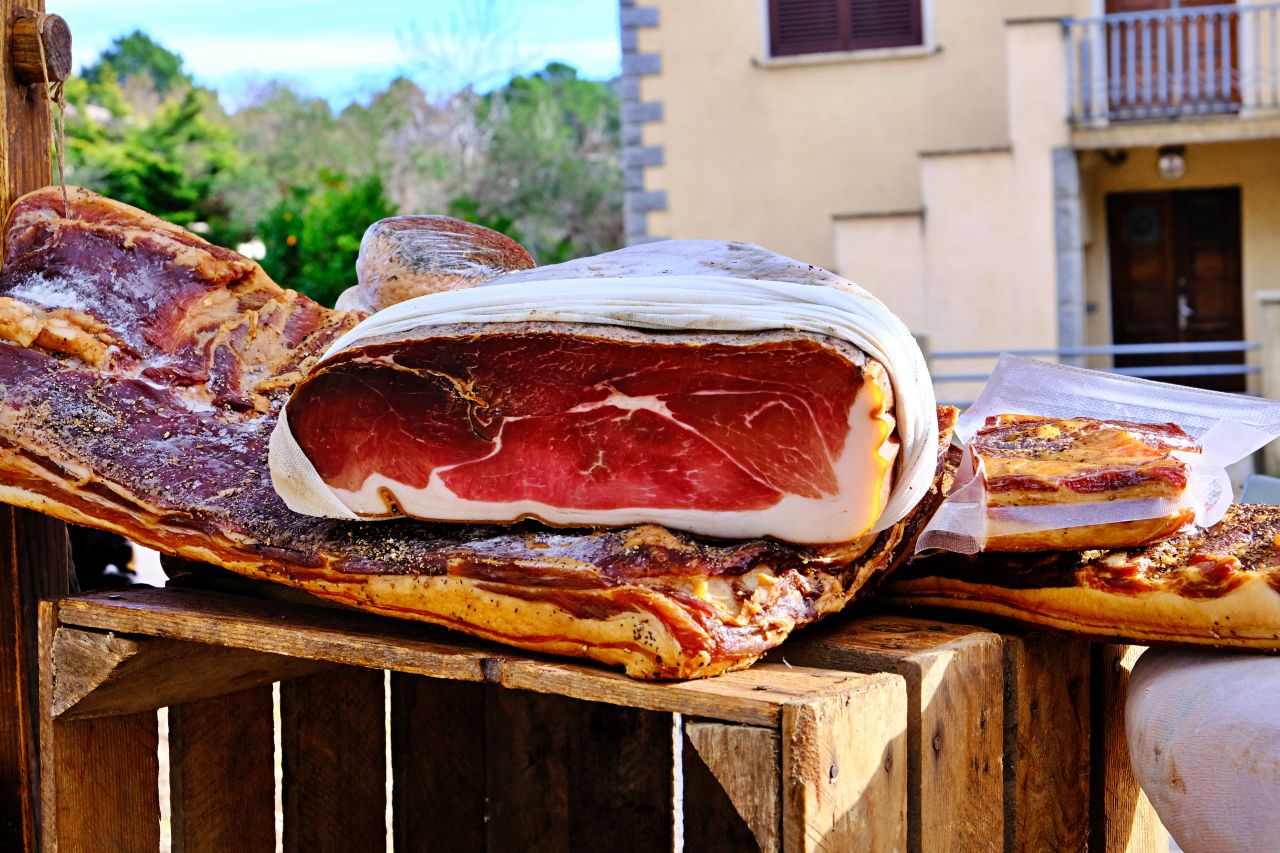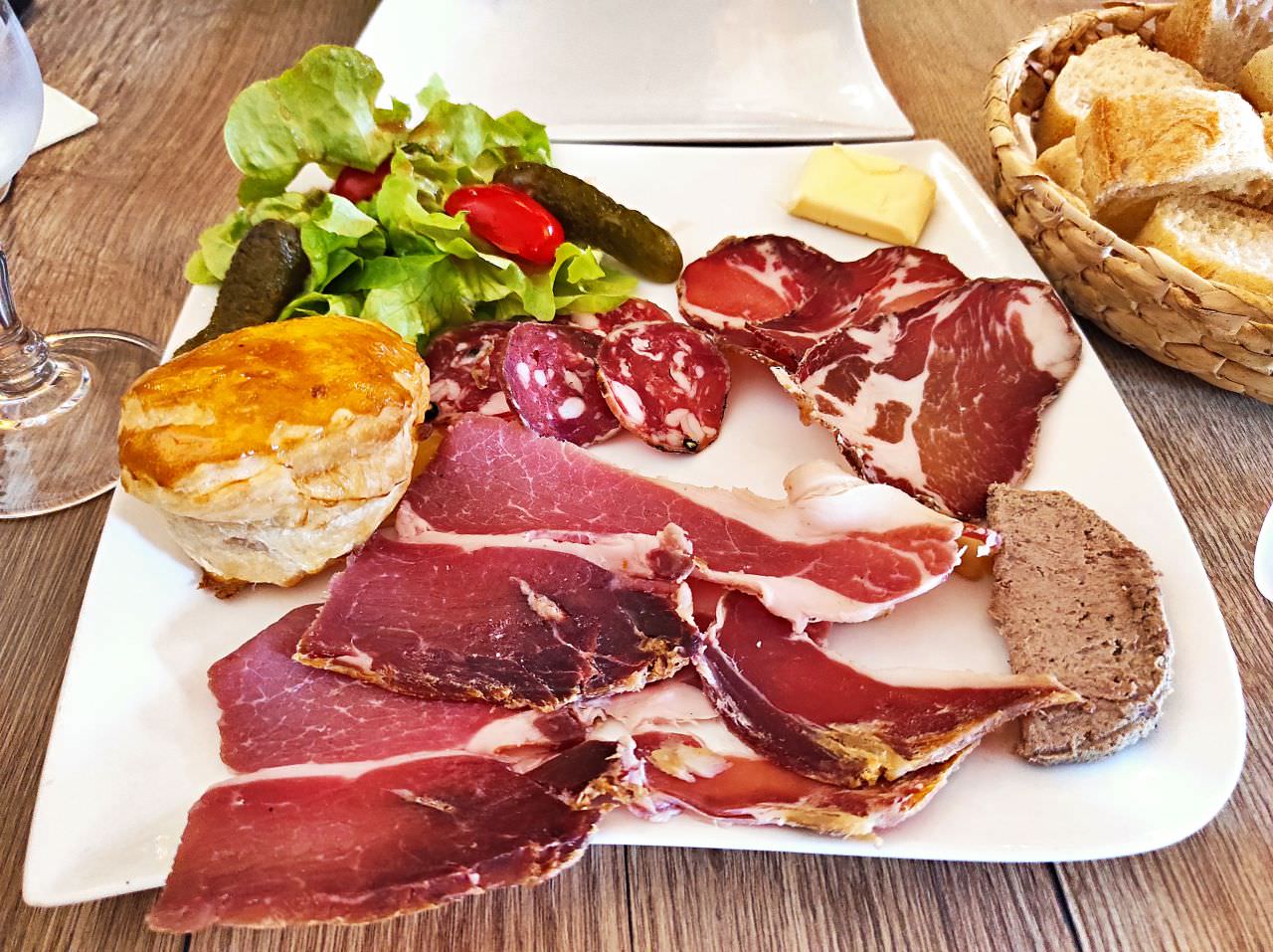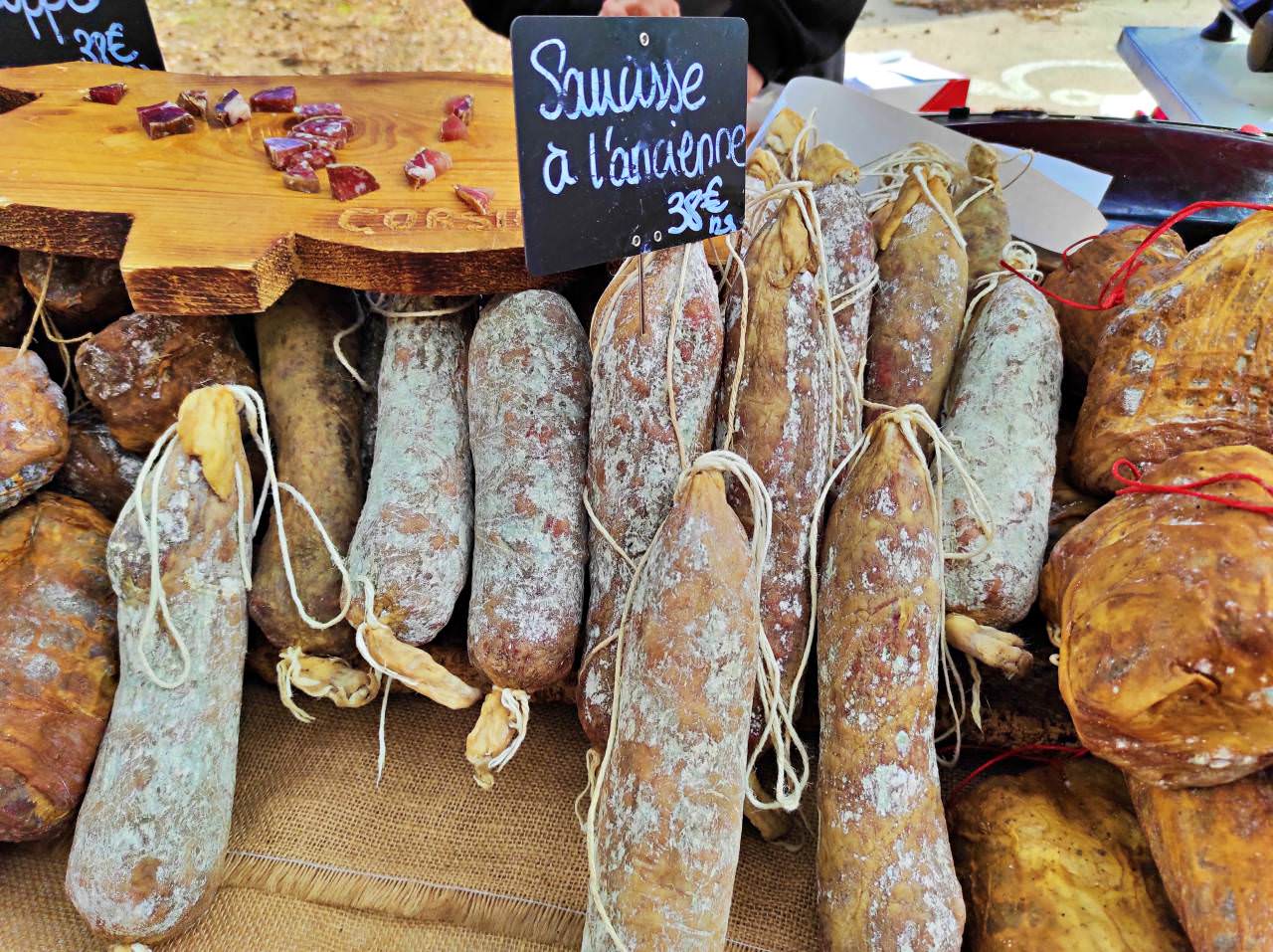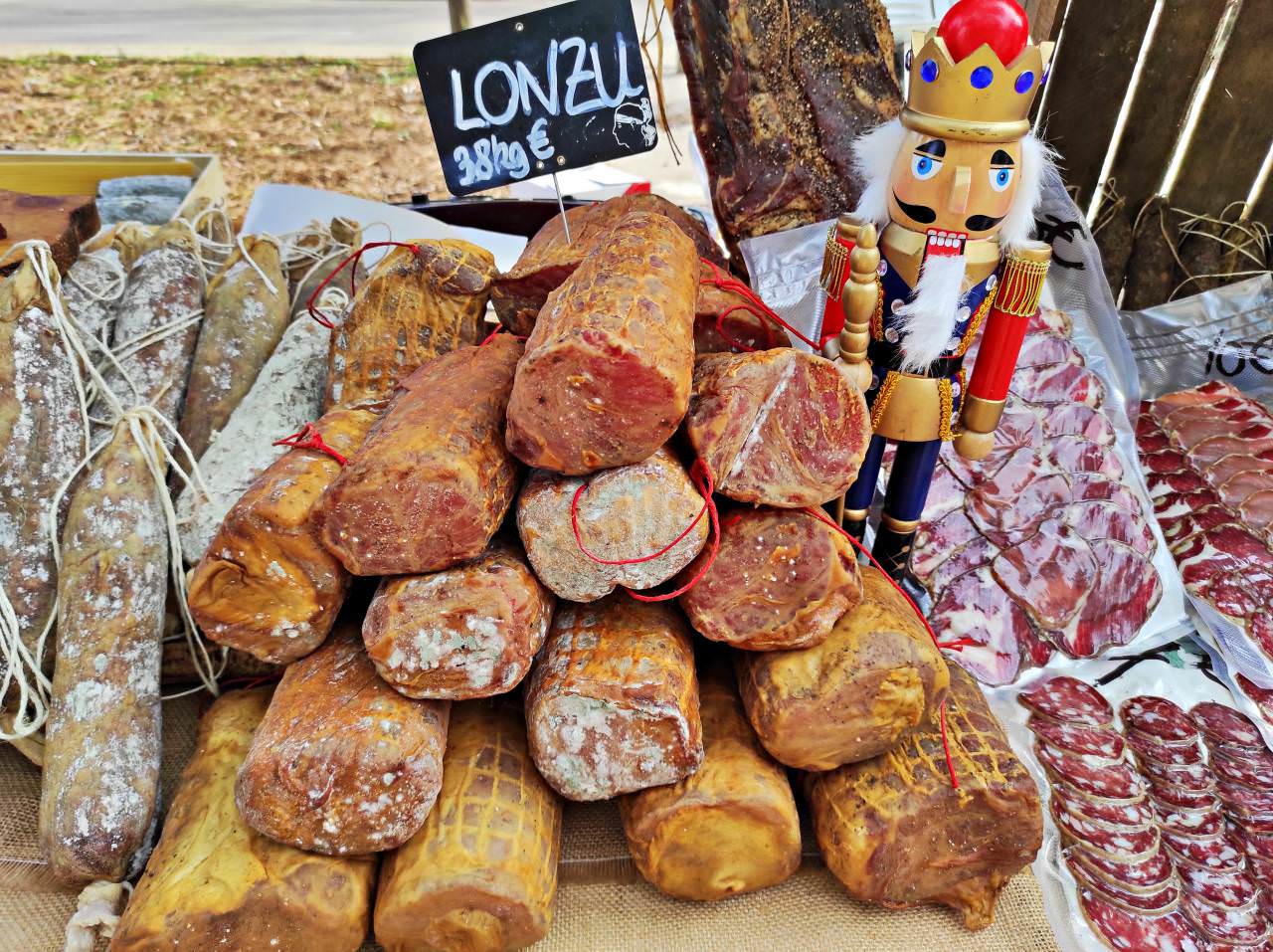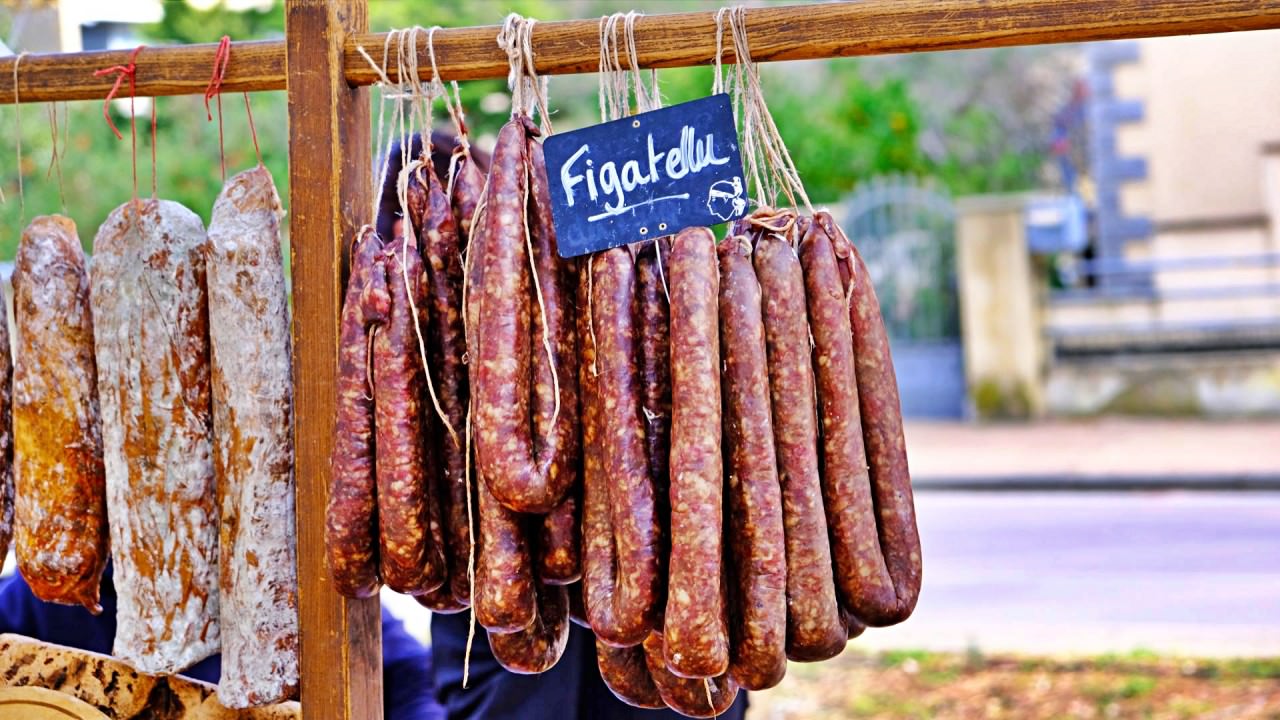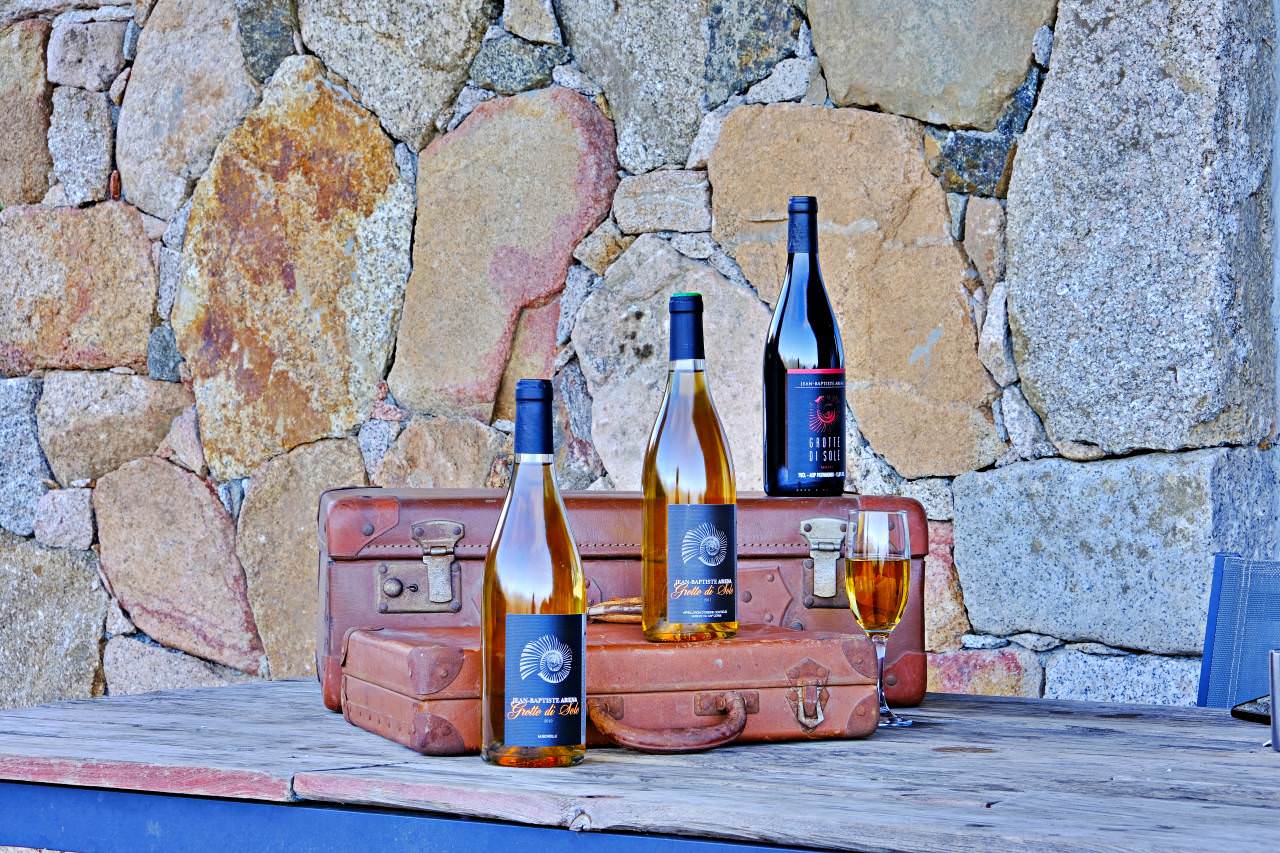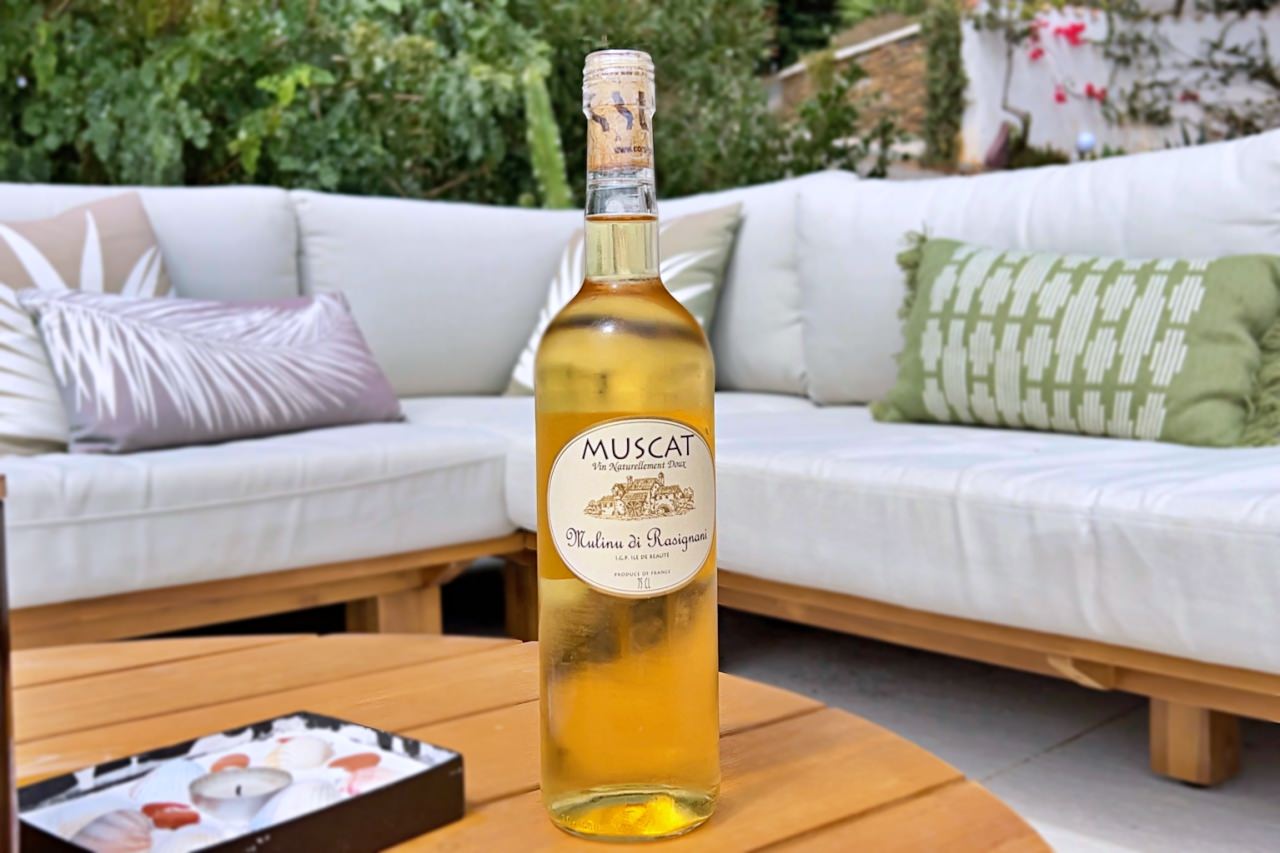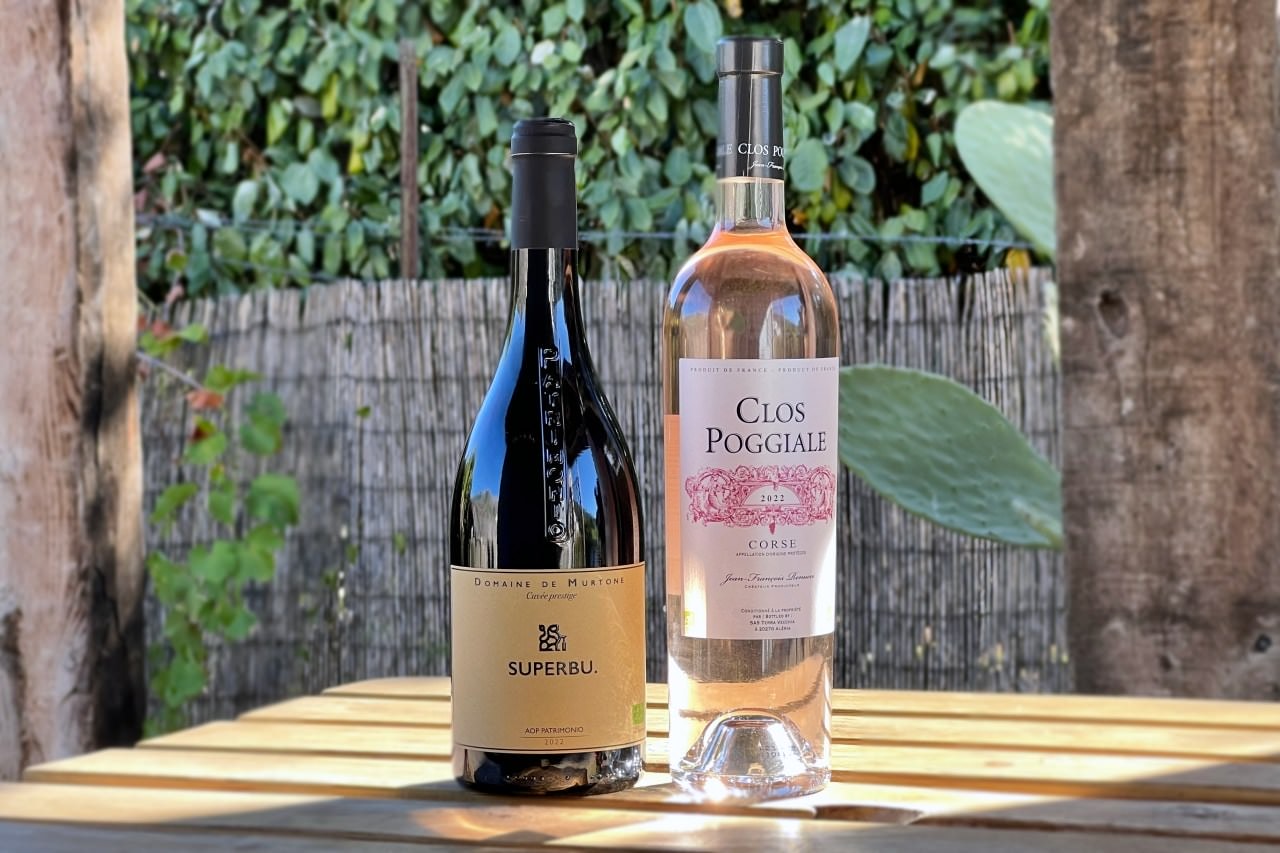Corsican cuisine, deeply influenced by its Mediterranean setting and rugged terrain, is a harmonious blend of French elegance and Italian robustness. Characterized by simplicity and authenticity, the local gastronomy primarily utilizes fresh, locally sourced ingredients. Notable for its exquisite charcuterie, made from chestnut-fed pigs, and the unique Pulenda, a chestnut flour-based dish, Corsica’s culinary offerings reflect its rich heritage and natural resources. Brocciu cheese, a staple in numerous Corsican recipes, epitomizes the island’s dairy tradition.
The culinary experience extends to sweet delights like Fiadone, a local cheesecake variant, and Canistrelli biscuits, which embody the island’s baking prowess. Corsican honey, with its diverse flavor profiles, underscores the island’s pristine environment. The wine culture, rooted in ancient traditions, and the distinct chestnut-flavored Pietra beer further showcase Corsica’s diverse and robust gastronomic landscape. This cuisine not only offers a taste of the island’s history and culture but also stands as a testament to its adaptability and culinary ingenuity.
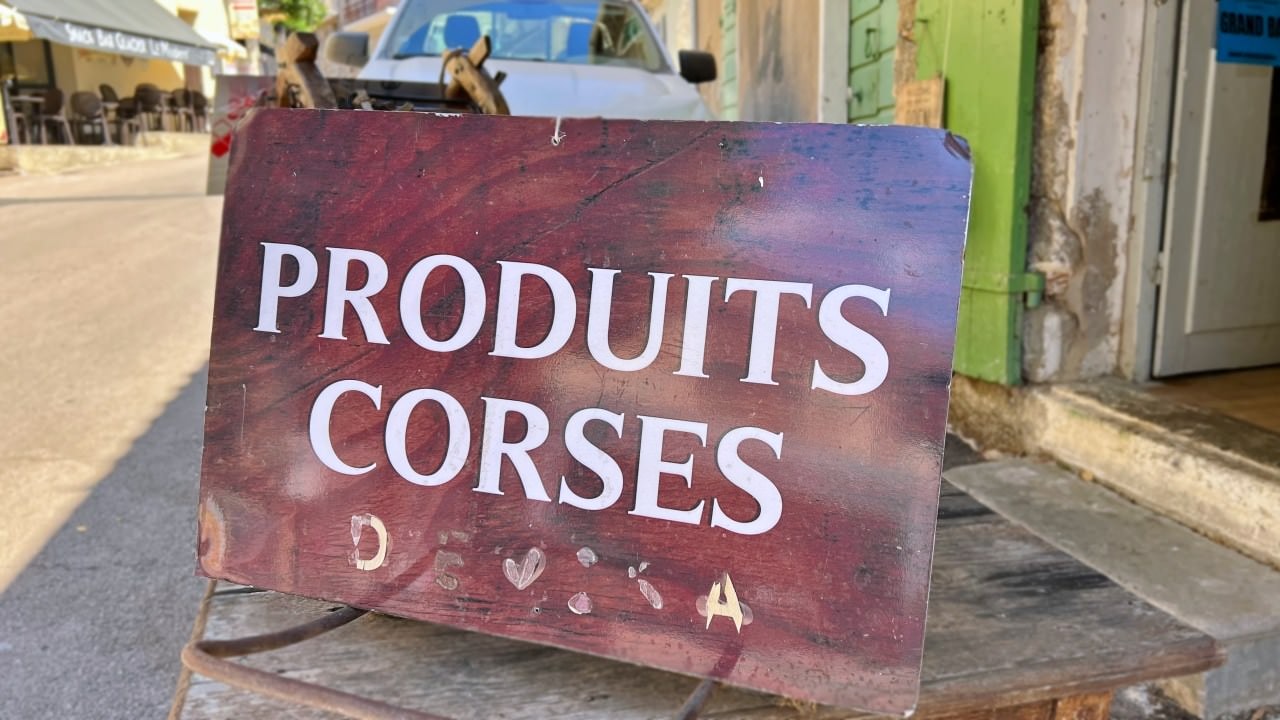
French and Italian Culinary Influences
Corsican cuisine has been shaped significantly by French and Italian influences, reflecting the island’s historical ties. The Italian impact is evident in the use of herbs, cheeses, and certain cooking styles, reflecting centuries of Italian presence on the island. French culinary traditions, on the other hand, have introduced a refinement in cooking techniques, particularly in the preparation of meats and sauces. This fusion of French sophistication and Italian rusticity creates a unique culinary experience that is distinctively Corsican. The island’s dishes, while influenced by these neighboring cultures, retain a character all their own, embodying the essence of Corsica’s diverse and rich gastronomic heritage.
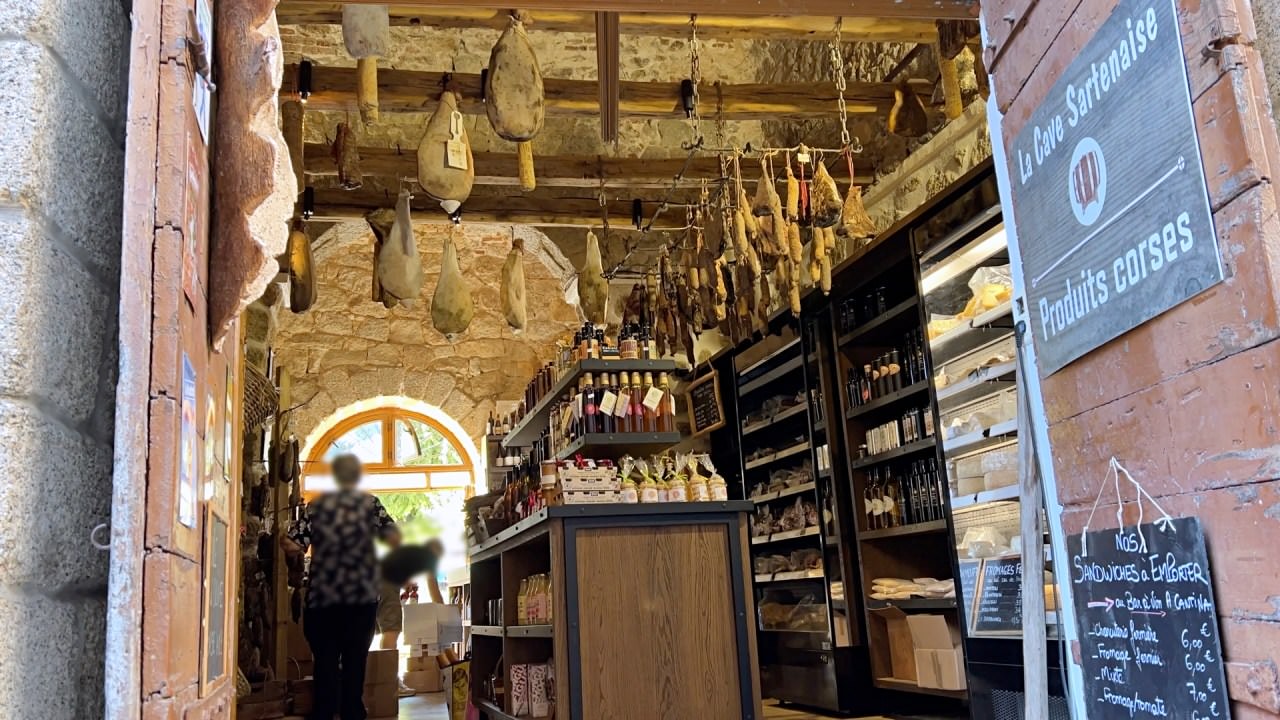
Corsica’s Signature Dishes
Corsica’s culinary landscape offers a rich array of flavors, each dish telling a story of the island’s diverse heritage. From the rustic charm of its charcuterie to the subtle nuances of its cheeses and wines, Corsican cuisine is a reflection of both its rugged terrain and its complex history. This section delves into some of the most popular and cherished dishes that form the cornerstone of Corsican gastronomy.
1. Charcuterie
- Description: Corsican charcuterie is highly regarded and includes a range of cured meats.
- Key Varieties: The selection often features saucisse (sausage), prisuttu (ham), panzetta (bacon), lonzu (cheek fillets), coppa (a fattier version of lonzu), and figatellu (a dry sausage made with liver).
- Production: These meats are typically made from pigs fed on chestnuts in the high forests of Corsica’s interior, contributing to their unique flavor.
- Cultural Importance: Charcuterie is a point of pride in Corsican culture, reflecting the island’s long-standing traditions in meat curing and preparation.
2. Pulenda
- Description: Pulenda is Corsica’s unique take on the classic polenta, a testament to the island’s historical reliance on chestnuts.
- Ingredients: Unlike traditional polenta made with corn flour, Pulenda is prepared using chestnut flour, which imparts a distinctively nutty flavor and smooth texture.
- Preparation: The ingredients, including chestnut flour, water, and salt, are combined to for/m either a thick porridge or a firm loaf, which is then sliced and served.
- Cultural Significance: Often eaten with brocciu cheese, fried eggs, or cured meats, Pulenda is a staple during winter and particularly during Christmas. It’s a reflection of Corsica’s adaptation of traditional dishes using locally available ingredients.
3. Brocciu
- Description: Brocciu is a quintessential Corsican cheese, central to the island’s gastronomy.
- Production: Made from a combination of milk and whey, it is a soft, white ewe’s cheese, similar in texture and flavor to Italian ricotta but with a lower lactose content.
- Versatility: Brocciu is exceptionally versatile and used in a plethora of Corsican dishes, both savory and sweet. It’s a common ingredient in omelettes, where mint is sometimes added, and is also used in chestnut-flour doughnuts, pastries, biscuits, and cakes.
- Cultural Significance: Its widespread use across a variety of dishes, including cannelloni, fiadone, and omelets, underscores its importance in Corsican culinary traditions.
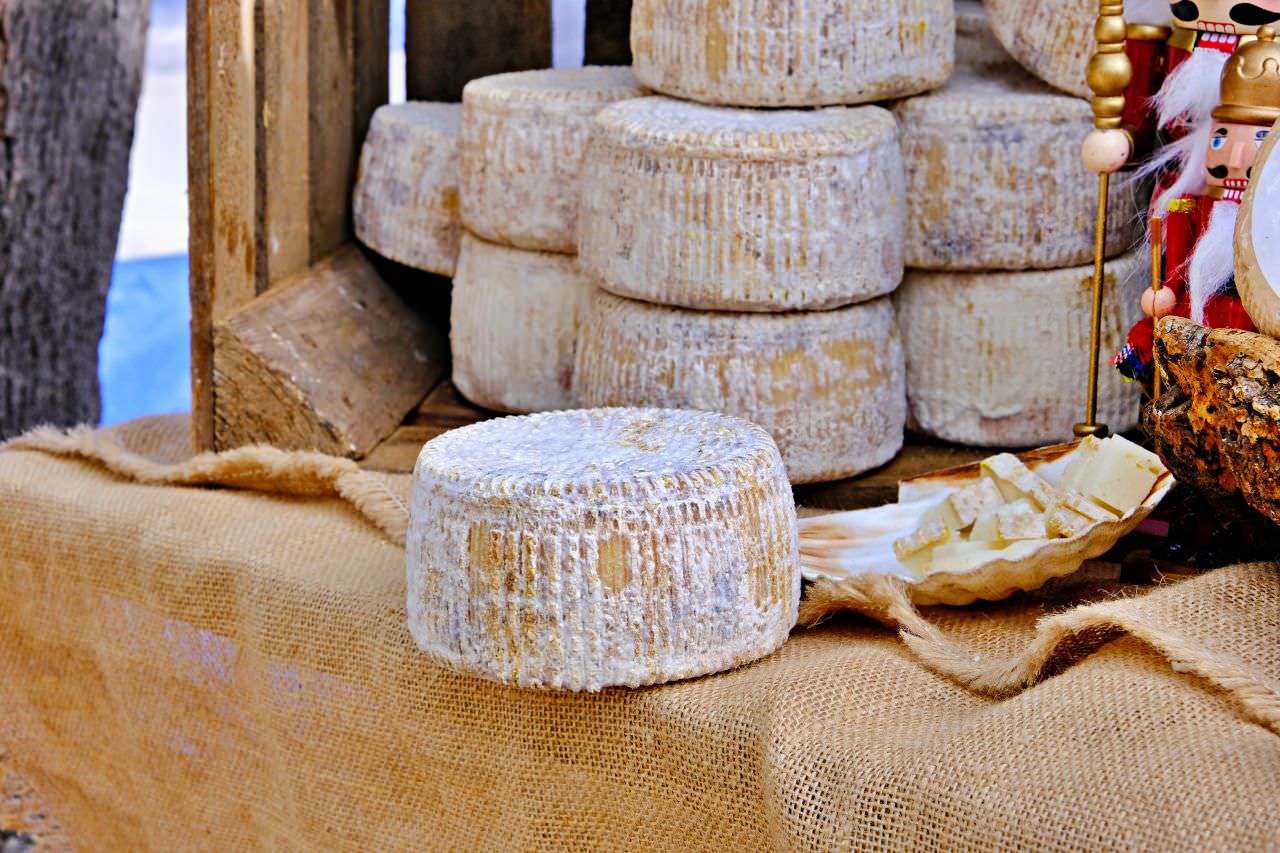
4. Fiadone
- Description: Fiadone is a traditional Corsican dessert, akin to cheesecake but with distinct local characteristics.
- Ingredients: It’s primarily made from brocciu cheese, a staple in Corsican culinary traditions. This cheese is similar to ricotta but is made from sheep’s or goat’s milk. The cake also incorporates lemon zest, adding a unique flavor profile.
- Serving Style: Fiadone is often served with a nip of eau de vie or drizzled with myrtle liqueur, enhancing its flavors.
- Cultural Significance: Typically associated with celebrations and festive occasions, Fiadone is a beloved Corsican treat that showcases the island’s penchant for blending sweet and savory elements.
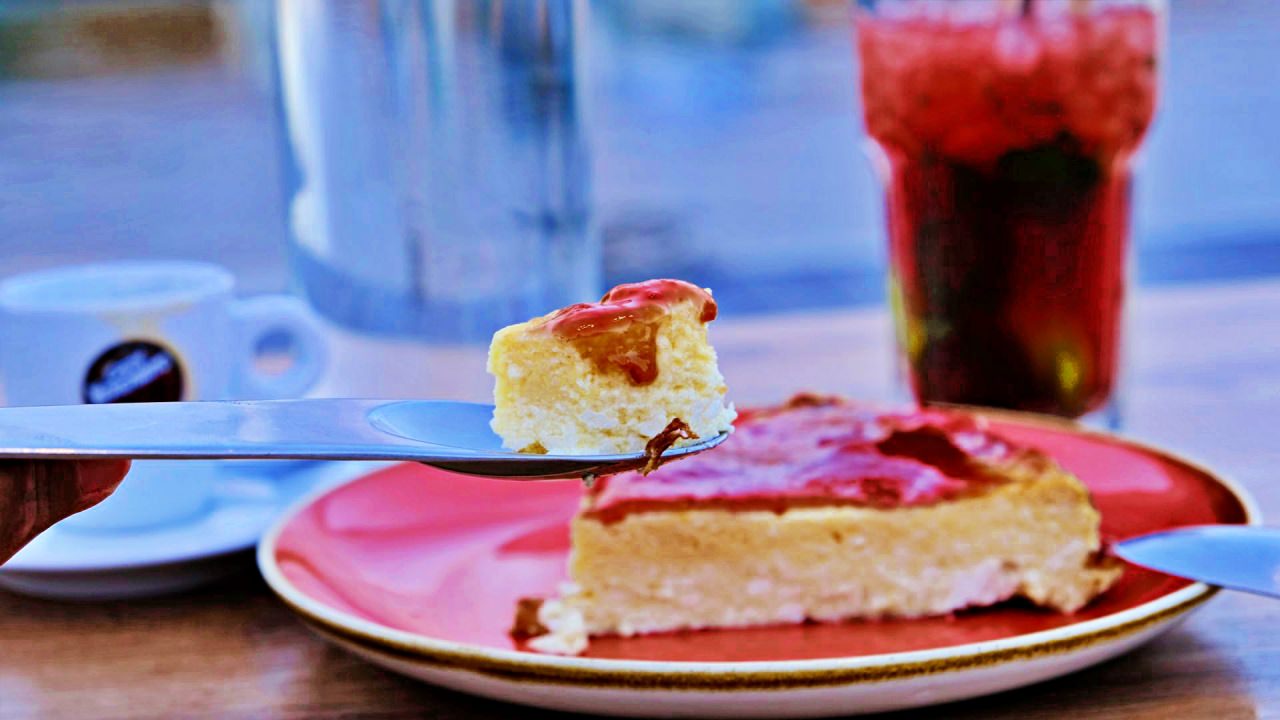
5. Canistrelli
- Description: Canistrelli are traditional Corsican biscuits, known for their versatility and presence in daily life.
- Ingredients and Flavors: These dry, crunchy biscuits are made from flour, sugar, and white wine, and come in various flavors like lemon, aniseed, and almond.
- Occasions: Canistrelli are a popular snack at any time of the day, from breakfast to late-night treats, and are often enjoyed with wine or coffee.
- Cultural Relevance: Widely available in Corsican cafes and patisseries, these biscuits are a symbol of Corsican hospitality and a popular souvenir for visitors.
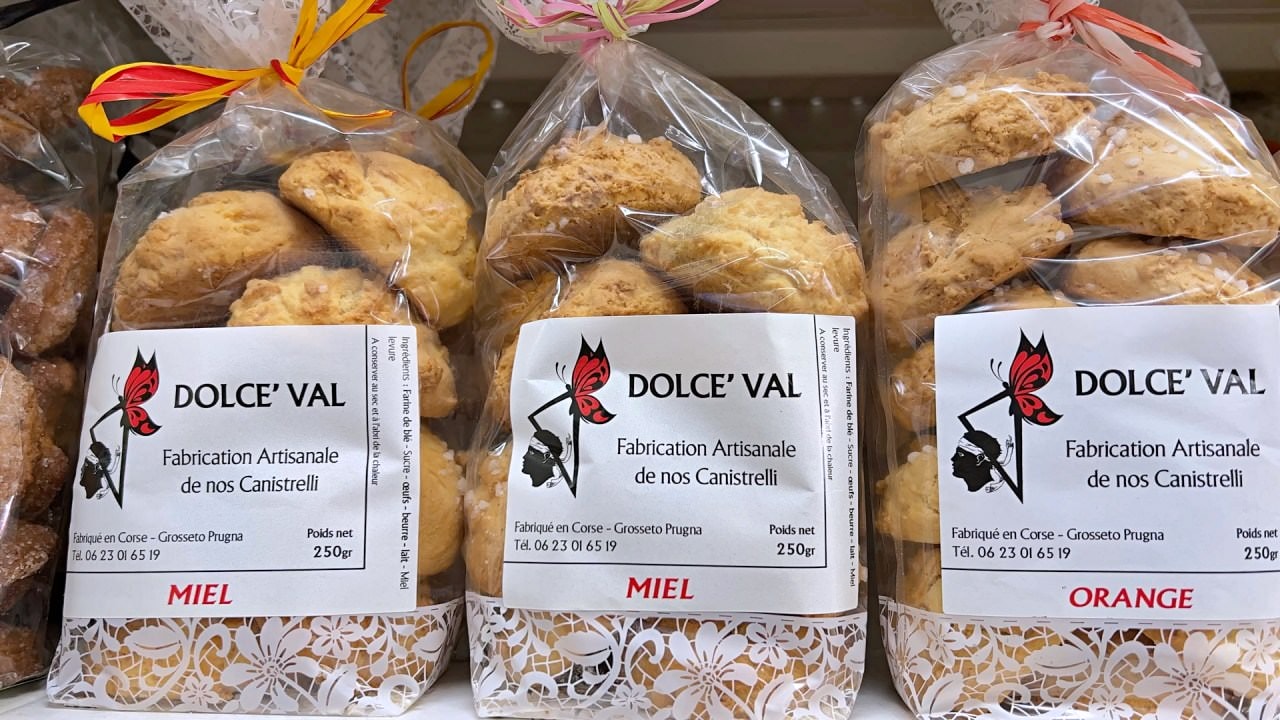
6. Honey
- Description: Corsican honey is a celebrated natural product of the island, known for its purity and unique flavors.
- Production Areas: Made in hives located in broadleaf forests or the maquis (a type of Corsican scrubland), it is free from pollution and agricultural influence.
- Variety: The honey’s characteristics vary based on the bees’ foraging areas – chestnut honey is dark and treacly, while maquis herbs yield a more subtle, floral bouquet. Arbutus honey, rare and slightly bitter, is preferred for cooking.
- Cultural Importance: Honey plays a significant role in Corsican cuisine, reflecting the island’s rich biodiversity and traditional beekeeping practices.
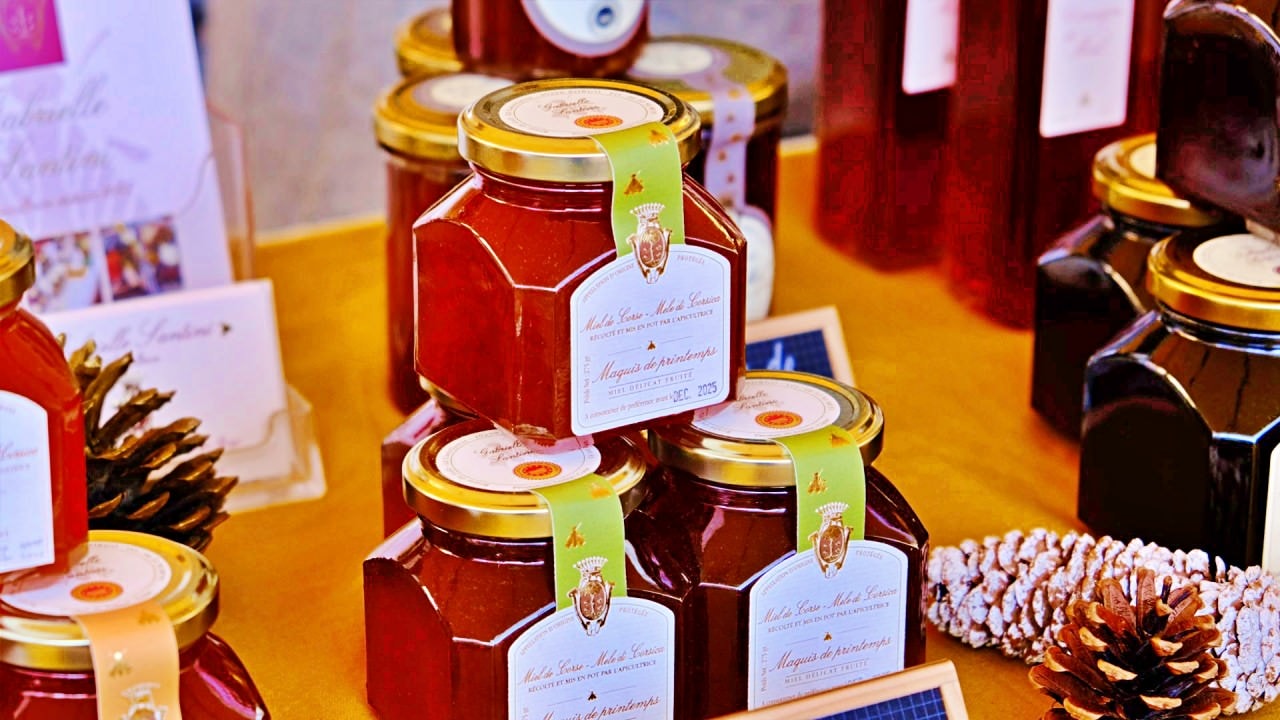
7. Corsican Wine
- History and Production: Corsican wine has a history that dates back to antiquity, with a tradition established by the Phoenicians and later influenced by Genoese and French viticulture.
- Varieties and Terroir: Corsica’s diverse terrain nurtures a unique wine profile. Key local grape varieties include Nielluccio, Sciacarello, and Vermentino. A standout is the Muscat du Cap Corse, a sweet wine from the northern peninsula, made exclusively from Muscat Blanc à Petits Grains grapes. The vineyards, located on varied topographies with clayey-limestone soils and a Mediterranean climate, underscore the island’s commitment to organic and biodynamic viticulture.
- Cultural Importance: Wine production is a crucial aspect of Corsican culture and economy, with local wines gaining international recognition for their quality and unique characteristics.
8. Corsican Beer
Description: Pietra is a signature Corsican beer, distinguished by its unique chestnut flavor. This amber-hued lager combines the rich notes of chestnut and honey, creating a balanced and distinctive taste profile.
Ingredients: Pietra is crafted using high-quality chestnut flour and selected malts. The use of chestnut flour, a traditional Corsican ingredient, imparts a deep, earthy flavor to the beer.
Production: Founded in 1996 by Armelle and Dominique Sialelli in Pietraserena, Pietra Brewery was Corsica’s first. The beer is brewed traditionally, emphasizing the fusion of malt and Corsican chestnut flour.
Cultural Significance: Pietra symbolizes the resurgence of Corsican beer, historically less known than wine. It reflects Corsica’s rich gastronomic heritage and is enjoyed as an aperitif or paired with traditional Corsican cuisine, such as game stews and artisan charcuterie.
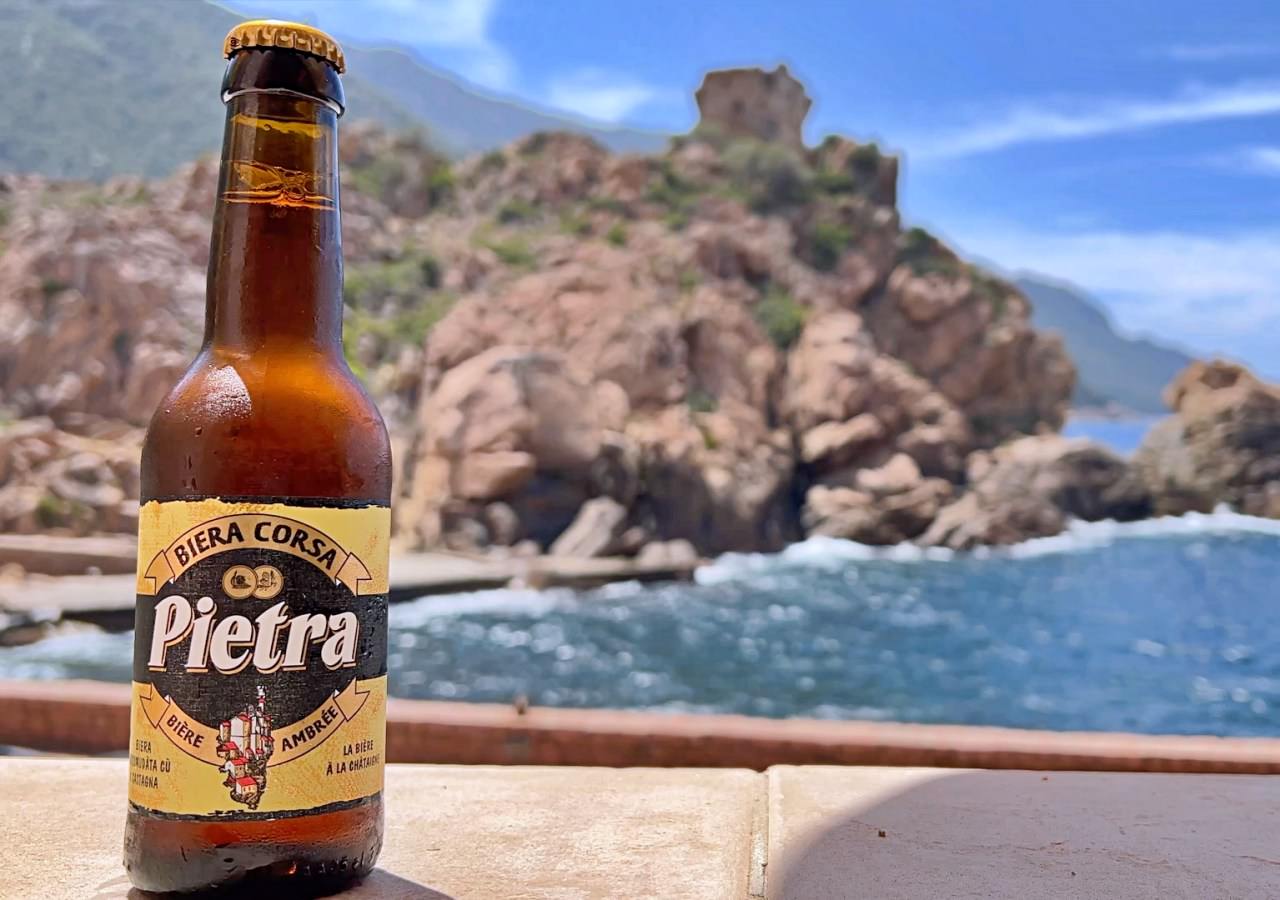
The Enduring Taste of Corsica
Corsican cuisine is a vivid tapestry woven from the island’s varied landscape, rich history, and cultural intersections. It stands as a testament to the resilience and creativity of its people, who have masterfully blended local resources with external influences to create a culinary identity that is uniquely Corsican. From the hearty flavors of its traditional dishes to the refined elegance of its wines and cheeses, Corsica offers a gastronomic experience that is as enchanting as the island itself.
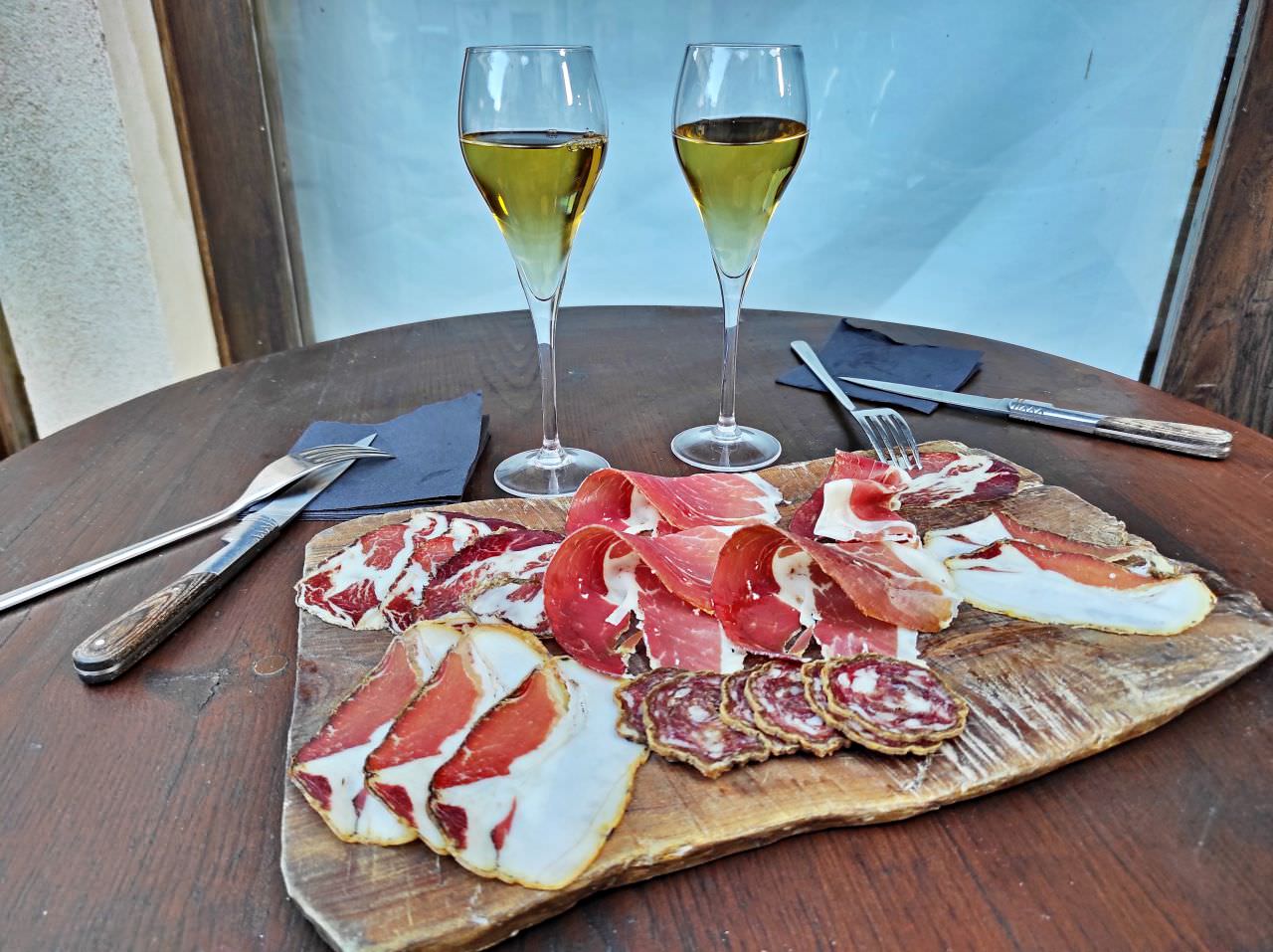
- Corsica Car Rentals: Unlocking Your Road Adventure

- 14 Days of Coastal Bliss: Unraveling Corsica’s Beach Paradise
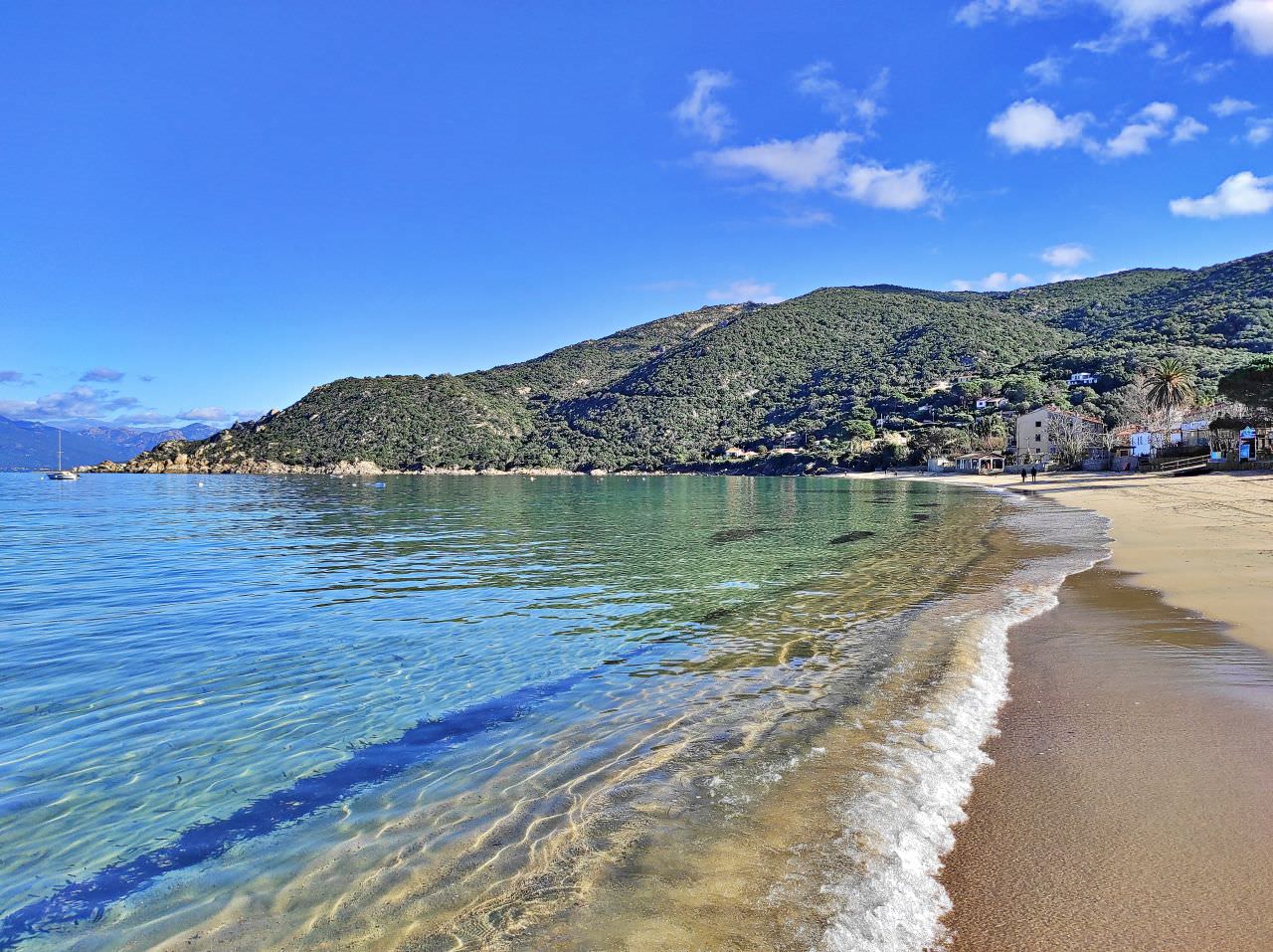
- 14 Days of Corsican Elegance: A Cultural Exploration Journey
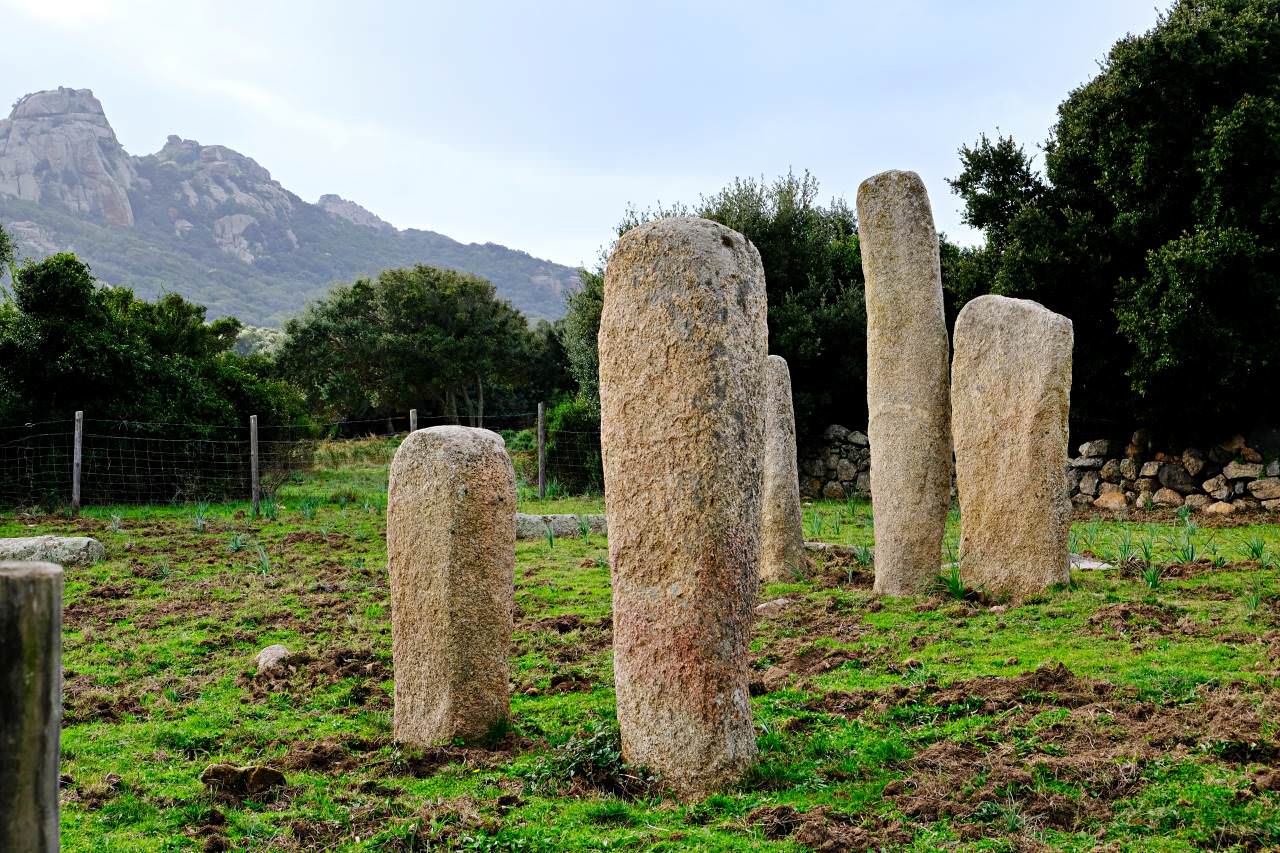
- 14 Days of Corsican Wilderness: Unleashing Nature’s Spectacle

- 10 Days in Corsica: A Beach Lover’s Ultimate Itinerary

- 10 Days in the Heart of Corsican Grace: A Journey Through Culture and Beauty
